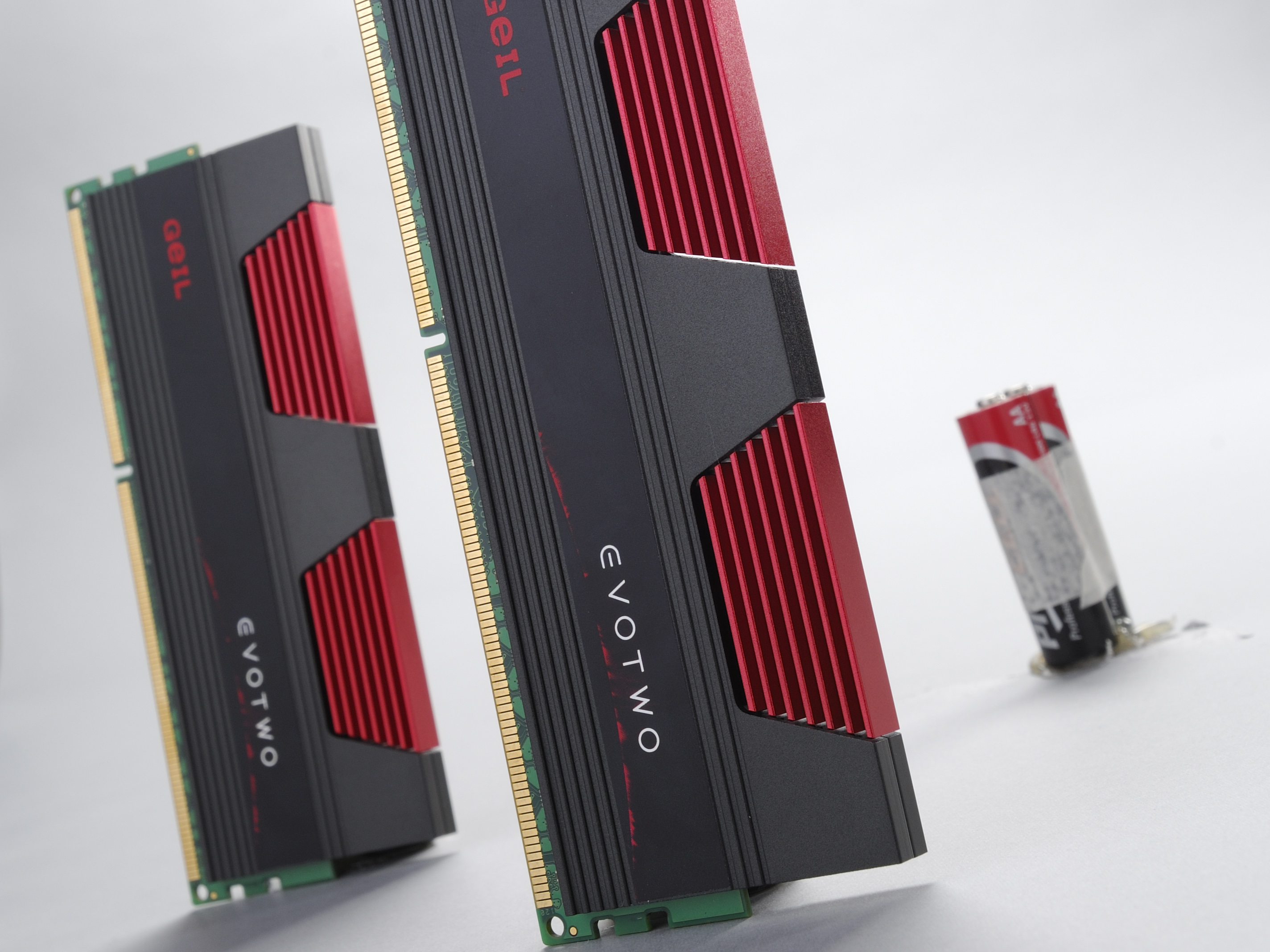TechRadar Verdict
This dual-channel kit is a story of what might have been. Doesn't deliver on its impressive specifications.
Pros
- +
Beautifully engineered
- +
Top notch specs
Cons
- -
Failed to deliver advertised frequencies
- -
Cheaper kits offer more performance
Why you can trust TechRadar
Hardcore gaming memory is the claim, but does the Geil Evo Two 2000MHz have the, er, game? First impressions of this dual-channel 4GB kit are outstanding. The classy presentation and packaging suggest your £136 is money well spent.
Meanwhile, the DIMMs themselves are beautifully engineered with alloy heat spreaders extending into modular black and red fins.
On paper, the specification looks pretty cool, too. First there's the speed rating of 2,000MHz. If this kit can deliver on that promise, there's enough headroom on offer for some pretty extreme CPU overclocking. Of course, the AData Extreme 2000MHz 4GB matches the 2,000MHz specification for less money.
What that kit can't do, however, is pull the same showbiz moves when it comes to latencies. The Geil Evo Two 2000MHz rocks some impressive 6-9-6-24 figures. Bundle the frequency and latencies together and the result ought to be something approaching table-topping performance.
Fire the Geil Evo Two 2000MHz 4GB kit up at 1,333MHz and the results are more or less impeccable. Bandwidth clocks in at 17.56GBps while a latency of 68ns is extremely competitive. It's a similar story for gaming, HD video encoding and graphics rendering. All the numbers are exactly where you'd want them. It all bodes very well for performance at higher frequencies.
Next up are the performance results at the Evo Two's 2,000MHz rating. At least, that should be next. But try as we might, we couldn't get this kit running higher than 1,600MHz. No amount of BIOS or voltage tweakery would unleash more frequency.
That's extremely disappointing and serves as a worthwhile reminder of the pitfalls of performance memory. Minute variations between motherboards – and even between two CPUs that are ostensibly identical – can sometimes be enough to spoil your fun.
On another day with another motherboard, things might have been very different. There really are no guarantees.
For the record, the Geil Evo Two 2000MHz's performance at 1,600MHz was actually above par for that frequency. Compared to the OCZ Platinum 1600MHz running at the same speed, it squeezes out an extra frame per second in World in Conflict, for instance, and likewise has a slight edge in raw memory bandwidth at 19.8GBps.
But that's not much consolation when clockspeeds above 2,000MHz would be more appropriate for a kit of this class and cost. Failing to deliver any overclocking headroom is one thing. Not hitting claimed frequencies is quite another.
The TechRadar hive mind. The Megazord. The Voltron. When our powers combine, we become 'TECHRADAR STAFF'. You'll usually see this author name when the entire team has collaborated on a project or an article, whether that's a run-down ranking of our favorite Marvel films, or a round-up of all the coolest things we've collectively seen at annual tech shows like CES and MWC. We are one.
